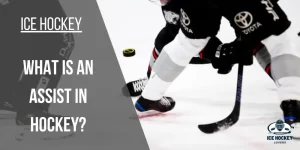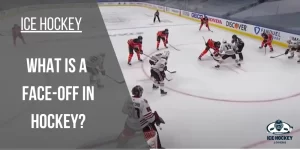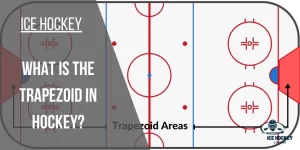The Ultimate Guide to Where can the Goalie Play the Puck?
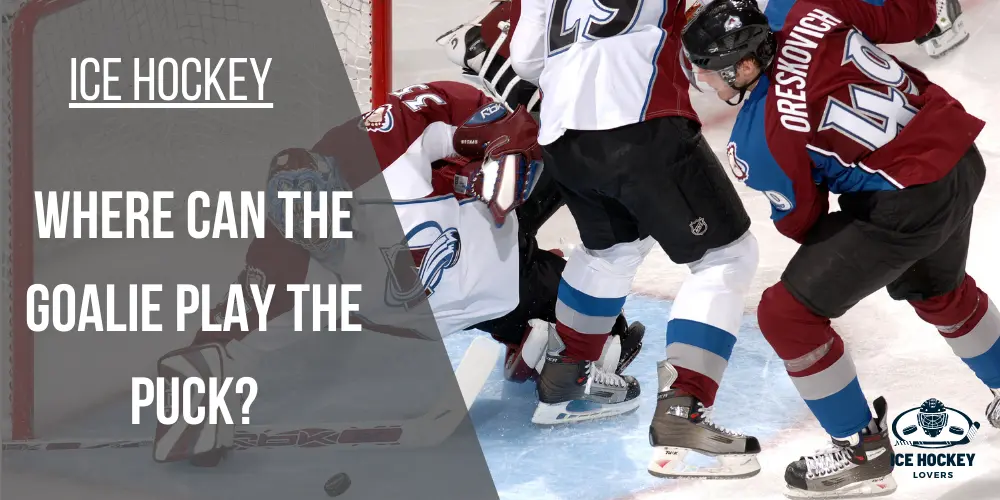
In ice hockey, the goaltender is one of the most crucial positions. Every hockey fan knows that the goaltender’s main job is to stop the puck from getting into the net. Other than stopping the puck, there are rules for the goalie that he must have to follow, but these rules confuse others. Such as, how far can a goalie go in the crease to play the puck? On a rink, where can a goalie play the puck? How restricted and accessible is his movement in the arena?
In hockey, goalies are allowed to play the puck in designated areas, not everywhere on the rink. He can play in the area between the goal line and the big center red line and the trapezoid area behind the net. A minor penalty of two minutes will apply if he plays the puck anywhere else than these specified areas.
Let’s break down this topic in detail to cover all these questions that confuse hockey fans.
Table of Contents
In Which Areas, Can a Goalie go and Play the Puck?
A goalkeeper has a big area to move freely and play the puck. In the specified location, he can go and skate with his stick, pass and shoot the puck anywhere in the area enclosed between the goal red line and the big center red line. He can go to the end of the ice surface where the goal red line extends.
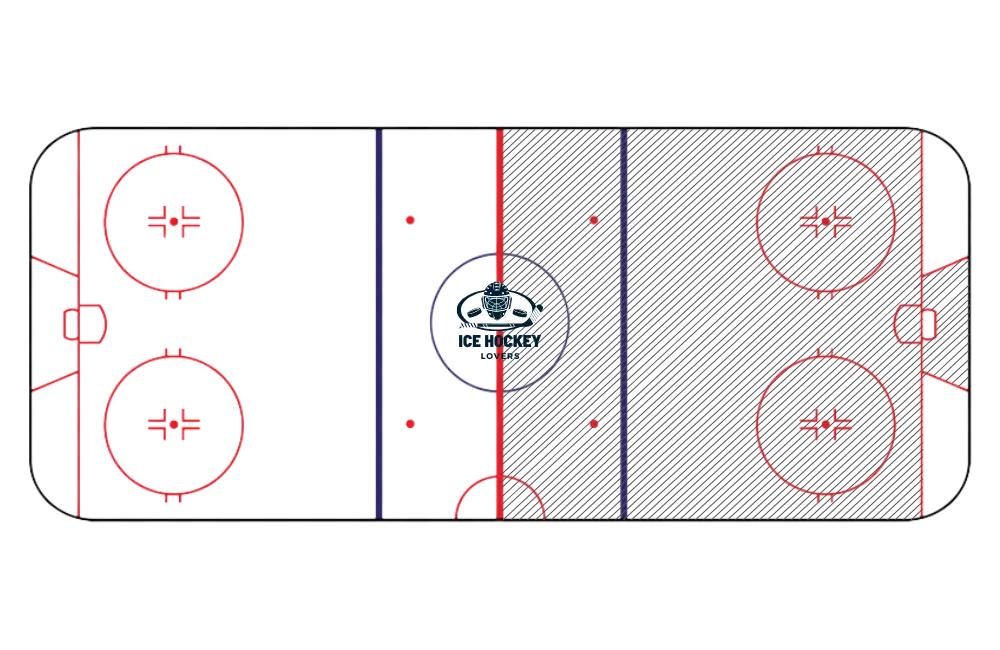
Moreover, he is allowed to go to the area behind the net of his goal, called trapezoid, to handle the puck. The trapezoid is the area that is defined by the lines 6 feet from the goal net and extends diagonally 28 feet to the end boards.
Why are there Restrictions on Goalies Playing the Puck?
The restrictions on goalie playing the puck, an attempt to enlarge offense, implied on the goaltender in the 2005-06 season.
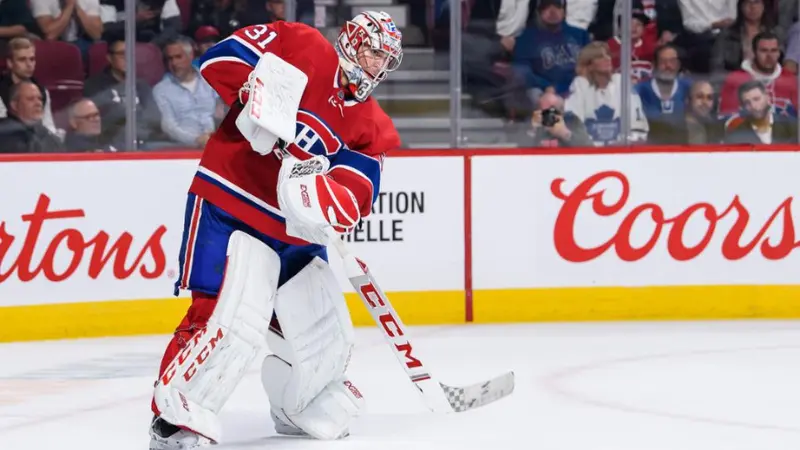
Before the 2005-06 season, the goalie had no such limitation. Many noticed that the goal scoring decreased because the goaltending became so good. Their puck-retrieving ability become a catalyst to pass the puck to their defensemen—this stop opponents from creating a good goal chance and making an effective offensive scene.
This case had managed to institute this rule onto the goalie, limiting his movement from handling the puck. Thus, allowing others to shoot the puck and regain better offensive chances to score more.
Where is the Goalie not allowed to Play the Puck?
1: Over the Red Center Line to the Opponent’s Rink
A goalie is only allowed to move on his team’s side of the rink and is restricted from crossing the red line and going over the opponent’s rink. This limitation is imposed on both playing the puck and checking the opposing team in their rink. If he attempts any of these, he will receive a two-minute penalty under the NHL rule book section 27.7.
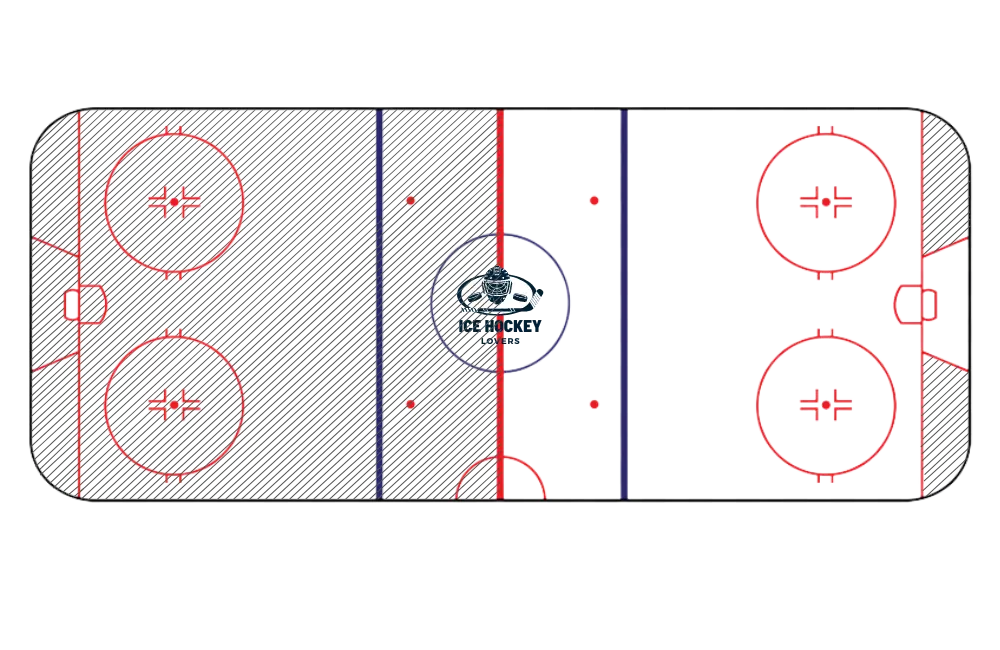
Although this has never happened as far as I have seen hockey, the only time I remember was when the goalie crossed the red line and went to the other end in a rash fight mood. However, the referee blew the whistle, and the play was called dead.
The goaltender movement limitation rule was included in the NHL’s beginning time. It is hard to see a goalie go over the whole area and play puck up in the ice to the opponents.
Despite this rule, goaltender movement naturally gets restricted because of heavy padding and equipment, which makes it hard for him to skate freely.
2: Specified Area of the Rink Corners
You have seen two areas beside the trapezoid and behind the goal line. The goaltender cannot play with the puck there.
The main thing that determines the goalie penalty is puck touching. Goalies can stand in these areas and play the puck as long as the puck has not passed these areas. Once the puck crosses the area, he cannot touch the puck.
If he does that, then he will receive a two-minute minor penalty. And just like other players, he will sit on the bench, and another player will replace him to serve the penalty.
A Warning Rule
Keep in mind this warning rule that a goalie would not assess a penalty if he touches the puck while his skate contacts with the crease in the designated area. It would appear in the game as he is bending on the ice and swinging his skate to pass the puck in the specified area.
Benefits of the Goaltender Playing the Puck
The significant advantage of the goalie handling the puck is his role in helping the defensemen. His ability to retrieve the puck and pass it to the defensemen before the opposing team lays his hands on it helps the defensive team quickly take over, transitioning the game from defensive to offensive by passing the puck to the offensive team. The goaltender with this flair also helps the defensive team from getting opened by the opposing team. It’s impossible to forbid the wear and tear on the defensive line over the whole season.
This move of goalies frustrates many teams as they take the puck from them and pass it to their defensemen, making it difficult for the opponents to establish pressure.
Famous goaltenders at playing the puck are Marty Turco and Martin Brodeur. Famous goalkeepers of today’s times are Ben Bishop, Mike Smith, and Carey Price.
Disadvantages of Goaltenders Playing the Puck
The significant harm that goalie playing puck can give is that any single mistake from them can lead to the opponent’s goal and might cause a big setback to the team.
This is the biggest worry and concern of the team; when the goalie moves away from the net to play the puck, there is no one to protect the net from the puck. In case the goalie has a bad pass or is away from the net, this can be a good opportunity for the opposing team as the offensive chance will now move from his team to the opponents. It could be a turnover for the team, which can lead to the goal.
This happened in the 2006 Stanley cup’s first game between Edmonton Oilers and Carolina Hurricanes. You can see the textbook example of bad puck handling here, where the goalie was behind the goal net with the remaining 30 seconds game, and the opposing team scored the goal and tied the match by 4-4.
Conclusion
All the confusion about the goalie’s movement becomes clear, right? Handling a puck is the goalie’s additional skill in protecting the net. Some are good at handling it and give significant support to their team; some need to improve at handling it and cause a disadvantage. Now, you will understand the game if you see the goalie playing with the puck except in the zone corner and beyond the goal red line.
However, if you see the goaltender mishandling of puck, this would create a great scene to watch, a combination of aggression, angst, anxiety, and excitement!

Who is Austin Taylor?
Meet Austin Taylor, your go-to source for everything ice hockey! With a passion for the sport that’s as deep as the ice itself, Austin Taylor brings you concise, expert insights and nitty-gritty details on all things hockey. From gear reviews to strategy breakdowns, Austin Taylor is your trusted guide to navigating the exhilarating world of ice hockey. Get ready to lace up your skates and dive into the game with Austin Taylor as your ultimate companion.

